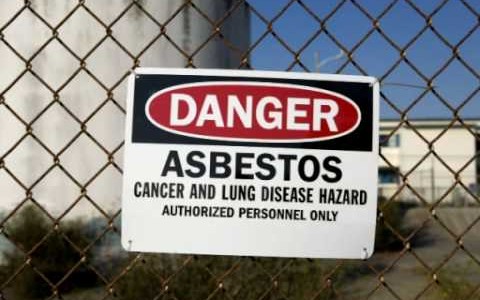Asbestos related Mesothelioma is a well known legal issue, in large part due to heavy advertising by law firms seeking to bring legal claims on behalf of injured parties. One common issue that arises in Asbestos-related cancer cases is; what happens if a second cancer develops after the first case ends? Can the Asbestos-related cancer victim sue again? The answer is not clear, and it varies from state to state, but in 2000 the Texas Supreme Court set a major precedent for the nation in Pustejovsky v. Rapid-American Corp.
In Pustejovsky, Henry J. Pustejovsky, Jr. was exposed to asbestos from 1954 to 1979 while working for Alcoa Aluminum in Rockdale, Texas as a as a metal pourer. When co-workers informed Mr. Pustejovsky that the asbestos he was exposed to could have harmed his health, he consulted a cancer attorney in Texas, and was examined by a doctor to determine whether in fact he was injured by the asbestos. The doctor found scarring on Mr. Pustejovsky’s lungs and diagnosed him with asbestosis, a nonmalignant disease caused by inhaling asbestos fibers. In 1982, Mr. Pustejovsky settled with Johns-Manville Corporation, an asbestos supplier, and he settled out of court for approximately $25,000. In 1994, Mr. Pustejovsky, now 59 years old, began experiencing shortness of breath, cold-like symptoms, and fatigue, Mr. Pustejovsky was diagnosed with malignant pleural mesothelioma, a cancerous tumor of the lung lining.
Up until this point, Texas was one of the many states which held by the “Single Action Rule”; to prevent plaintiffs from “splitting claims”, the rule gives plaintiffs one chance to sue for a single injury. The Supreme Court of Texas explained the ramifications of the “Single Action Rule” on Mr. Pustejovsky’s case: “Pustejovsky could not sue for mesothelioma after settling his asbestosis claim without violating the single action rule’s prohibition against claim splitting.”
However, it was in this case that the Supreme Court of Texas set the precedent to apply the “Second Injury Rule” to workplace exposure cases. The “Second Injury Rule” allows a person with asbestos related cancer to sue in a second lawsuit for an asbestos-related cancer if one develops at a future date. The court explained that; “We hold that a person who sues on or settles a claim for a non-malignant asbestos-related disease with one defendant is not precluded from a subsequent action against another defendant for a distinct malignant asbestos-related condition.”
It is interesting to note the reasoning why the court carved out an exception to the “Single Action Rule.” A central policy argument for the “Single Action Rule” is that it is needed to protect both defendants and the courts from cases being filed in piecemeal, making them impossible to handle. However, in asbestos cases, if the plaintiff was only allowed one claim, then the plaintiff would have to include in that claim the potential for cancer in the future. The unknowns involved in litigating the potential for future cancer is even more difficult for courts and defendants, rather than to allow a plaintiff to bring suit should that later cancer ever arise.
Note: This website presents only general information about the legal issue above; it is not intended as legal advice nor should you consider it such. If you’re looking for asbestos litigation or settlement information, please check out our resource directory to find a cancer lawyer near you!
